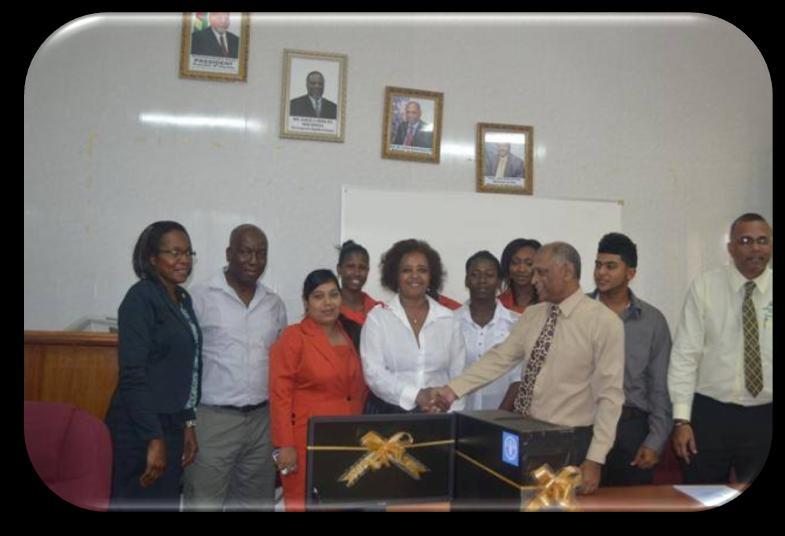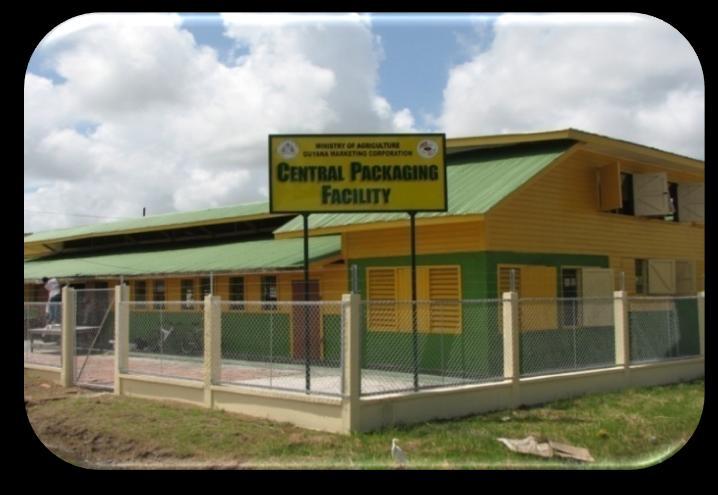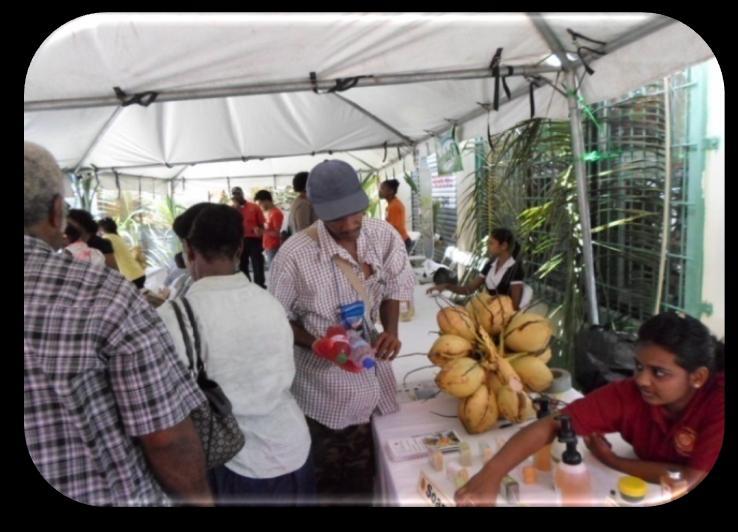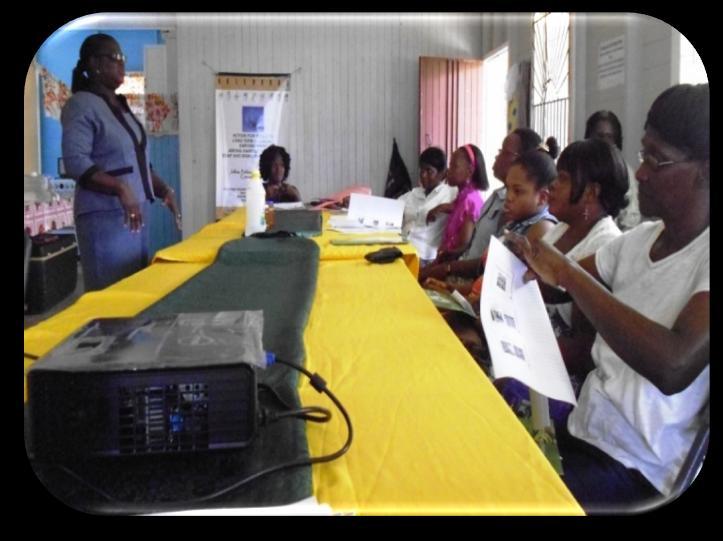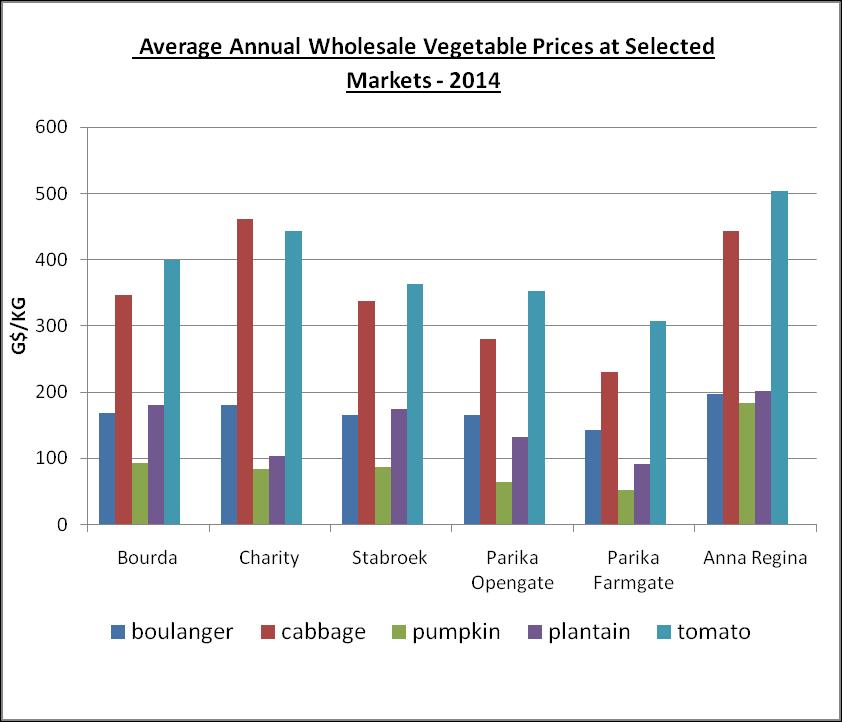
9 minute read
Market Information Centre
The Market Information Center (MIC) is the hub of information for non-traditional agricultural commodities. It acts as the Ministry of Agriculture‟s Market Intelligence on non-traditional agriculture produce targeted for export markets and to promote agro-processors for the same.
Its core activity is to provide market and marketing information to farmers, exporters, agri-business investors and the promotion of Guyana‟s Non Traditional Agricultural commodities.
The Marketing Information Centre functions in several capacities including:
1. Gathering and disseminating market information
2. Identifying and promoting the economic potential of new non-traditional agricultural products, based on the competitive advantages of Guyana.
3. Collaborating with agencies such as NAREI, Plant Health/Quarantine, Pesticides Board, etc., to have challenges in farming communities addressed more effectively.
4. Providing support to potential investors – regionally and extra-regionally – who desire to invest in Guyana.
5. Training of farmers in areas of post harvest handling, pricing, packaging and labelling, and good agricultural practices etc.
1. Market Advisory
Market facilitation and information dissemination
In 2014, GMC continued to function as the hub for marketing information on non-traditional commodities through its Market Information Centre (MIC). Approximately 404 clients were provided with marketing information. Clients were able to obtain information on prices, exports, production, exporting procedures and requirements for the various countries and marketing advice. The information was BOX 1: Success Story: Market Linkages disseminated via GMC‟s Market and Enterprise Information System, telephone and emails. Additionally, information was provided to those persons who visited the MIC.
In a bid to ensure that clients were able to access timely and useful information, GMC also printed several brochures and flyers. The corporation continued to promote its Packaging Facilities, Cold Storage Facilities, Agricultural Field Crates, Guyana Shop and AMIS Text Messaging Service through the use of brochures and flyers. In 2014, The corporation also designed two new brochures on „Our Services” and the “Guidelines for
Figure 1: GMC’s Services Brochure
Establishing an Agro-processing Business.”
Market Linkages
The Marketing Officers at GMC were successful in linking several pumpkin farmers to exporters and vendors. 127,500 lbs of pumpkin were sold as a result of linkages created through GMC’s efforts to find markets for the local farmers. GMC’s Officers contacted the relevant parties and also guided them throughout the process and followed up to ensure that the transactions were completed.
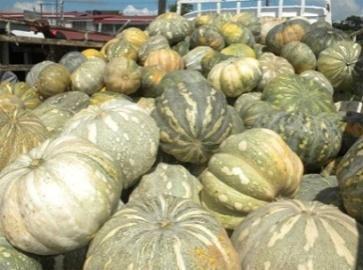
There were several successful market linkages created between Farmers and Exporters, Farmers and Agro-processors, Exporters and Agro-processors. GMC‟s Officers acted as the medium for creating the initial link between the relevant stakeholders in a bid to assist them with the marketing of their products.
2. Promotion
Trade Fairs/Exhibitions
In 2014, the Guyana Marketing Corporation, through the Marketing Department, was involved in numerous promotional activities which sought to encourage the use of locally produced commodities. The Officers at GMC participated in the following Trade Fairs/Exhibitions:
1. GUYEXPO 2014 2. Caribbean Week of Agriculture (CWA) 3. Essequibo Night 4. Berbice Expo & Trade Fair 5. Linden Expo 6. International Food and Drink Fair 7. West Berbice Expo and Trade Fair 8. Tourism Awareness Fair
9. Guyana Trade, Tourism and Investment Exposition
The corporation also took the opportunity to promote Guyana‟s local produce and products by organizing displays at the following events: 1. CARISCIENCE General Annual Meeting and National Symposium 2. World Food Day 3. GSA Open Day 4. MMA Open Day 5. Caribbean Development Bank Conference 6. Bath Settlement Village Day 7. Victoria Village Day
Figure 2: Caribbean Week of Agriculture in Suriname
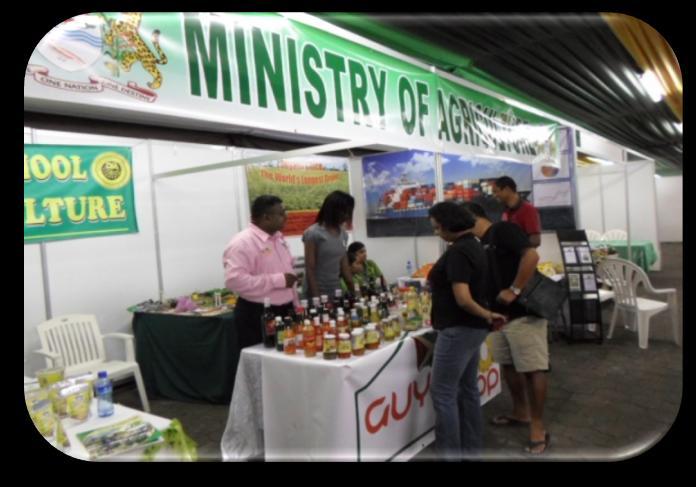
Figure 3: Agro-processors Street Fair at Main Street

3. Market Extension
BOX 2
Field visits were made to the following areas:
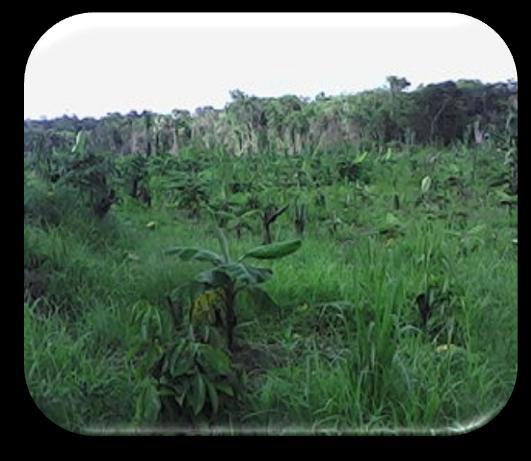
1. Mocha Arcadia 2. Craig 3. New Hope 4. Friendship 5. Garden of Eden 6. Land of Canaan 7. Soesdyke 8. Coverden 9. Hill Foot 10. Kuru Kuru 11. Laluni 12. Yarakabra 13. Silver Hill 14. Adventure 15. Dalgin 16. Haruni 17. Lanaballi 18. Beribisiballi 19. Canal #1 and #2 20. Parika Back 21. Naamryck 22. Hogg Island 23. Ruby 24. Salem 25. Hague 26. Wakenaam 27. Cozier Canal 28. Grant Hopetown 29. Grant Vanella 30. Grant Friendship 31. Grant Paradise 32. Grant Perseverence 33. Grant Progress 34. Grant Good
Fortune 35. Grant Aberdeen
Canal
Figure 4: Field Visit
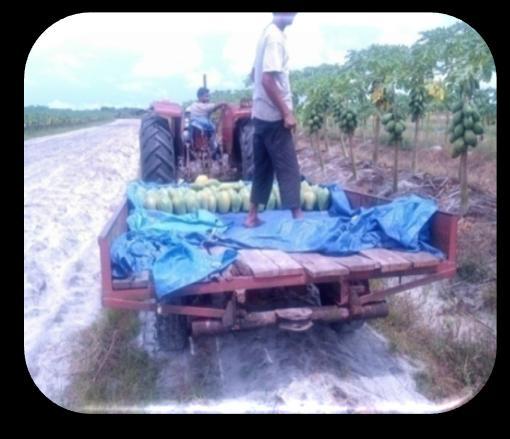
Figure 6: Field Visit
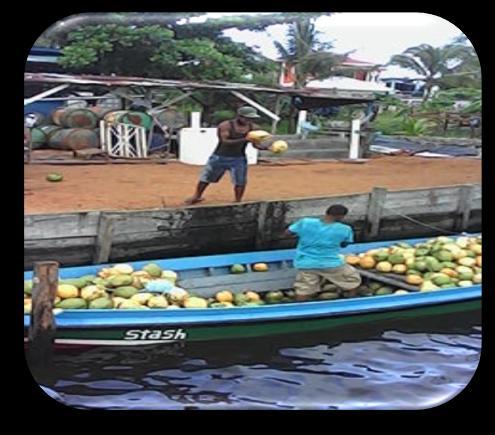
Figure 5: Field Visit BOX 3
Field visits were made to the following areas:
36. Hackney Canal 37. Capoey 38. Dartmouth 39. Stanleytown 40. Annlegt Canal 41. Crabwood Creek 42. #44,45 and 46
Villages 43. Adventure 44. Eversham 45. Highbury 46. Black Bush Polder 47. Mara 48. Molesen Creek 49. Lower Kaituma 50. White Creek 51. Barima 52. Black Water 53. Waini 54. Karaibo 55. Morahwanna 56. Sacred Heart 57. Arukamai 58. Hotaqui 59. Wauna 60. Hobodieah 61. Yarakita 62. Unity 63. Sebai 64. Kobremo 65. St. Anslem 66. St. Dominique 67. St. Mary 68. Waikarabi 69. Upper Aruau 70. Three Brothers
4. Agriculture Market Information System
The Agriculture Market Information System (AMIS) is managed by the Guyana Marketing Corporation (GMC), the marketing agency within the Ministry of Agriculture.
Although this service was officially launched in June 2009, the Ministry of Agriculture, through the Guyana Marketing Corporation has been maintaining various aspects of an agricultural marketing system for over two decades.
There are several components that make up the Agriculture Market Information System. These components include:
A. PRICE COLLECTION – Wholesale, retail and farm-gate prices of agricultural commodities are collected from seven markets in Regions 1, 2, 3, 4, and 10 daily or weekly depending on the market operation and major market days. This price information is stored in the FAO AgriMarket Software and it can be retrieved for reporting or dissemination purposes. Excel is also used to produce graphs and charts for reporting purposes.
Guyana Marketing Corporation maintains a record of prices of agricultural commodities from 2005 and is widely used for analysis as well as to provide historical price trends for the key stakeholders.
B. AMIS - This is a SMS service that is used by exporters, farmers and even consumers for accessing current agricultural commodity prices by sending a text message to 1010 with the name of a specific commodity (produce). The service is managed by
MOA/GMC through DIGICEL.
In 2014, there have been 80 updates done by the Guyana Marketing Corporation.
C. CROP DATABASE - This is an excel-based database which is used to store and retrieve data relevant to a farm's production. Farmer details and crop details
Figure 7: AMIS Flyer
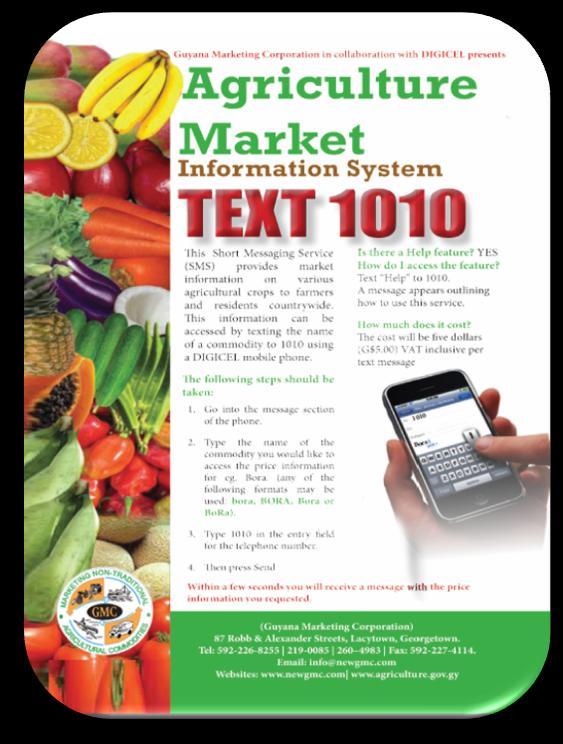
are recorded. There is also the monitoring and forecasting of crops available by producer, location and quantity produced. The Marketing and Agricultural Officers gather farm and farmer data for this system through field visits, outreaches and telephone conversations with farmers. Additionally, in 2014, there was extensive work done under the FAO – TCP Project entitled „Support for the Enhancement of the National Agricultural Information System in Guyana‟ to design a Forecasting Database as part of the GMC‟s Market Information System (GMCMIS). This database allows for the entry of Farmer‟s Personal and Crop Information and it has the capacity to generate forecasted production.
D. COLLECTION OF EXPORT DATA – GMC is also responsible for the collection and monitoring of the export of non-traditional agricultural commodities. This is used to observe the trends of commodities exported from Guyana to regional and extra-regional countries. Information on the types and quantities of agricultural commodities exported is collected from the Guyana Revenue Authority, Caribbean
Airlines, Plant Quarantine and GMC‟s Packaging Facilities as well as from individual exporters.
National Agricultural Information System in Guyana‟; an Export Information Management Component was designed as part of the GMC Market Information System (GMCMIS). This component allows for the entry of data and it also generates specific reports.
5. Export Brokerage Service
The corporation has maintained its export brokerage service to all farmers, exporters and agro-processors. During 2014, three hundred and sixty eight (368) documents were prepared and processed. Of this figure, 79.1% (291) were for fruits & vegetables, while approximately 5.7% (21) of the documents were for the exportation of seafoods and the remaining 15.2% (56) were for the exportation of other commodities such as leather craft and virgin coconut oil.
A comparative analysis of the export documents that were prepared in 2013 and 2014 revealed that there was approximately a 27% overall increase in the use of the export brokerage service in 2014.
In 2014, it was observed that Fruits & Vegetables & Seafood contributed greatly to the increase in the brokerage revenue as compared to 2013.
The diagram shows the comparative analysis of the export documents that were prepared in 2014. It shows that 60% of export documents were for shipments to regional countries while 40% were for shipments to extra regional countries. It is important to note that the majority of export documents for the regional countries, for 2014 were for shipments to Barbados. In relation to extra regional countries, the majority of export documents were for shipments to Canada. During 2014, the Guyana Revenue Authority increased its efficiency by introducing the online declaration checker. This allows for the status of the customs documents to be checked online as against having to visit the Guyana Revenue Authority‟s office.
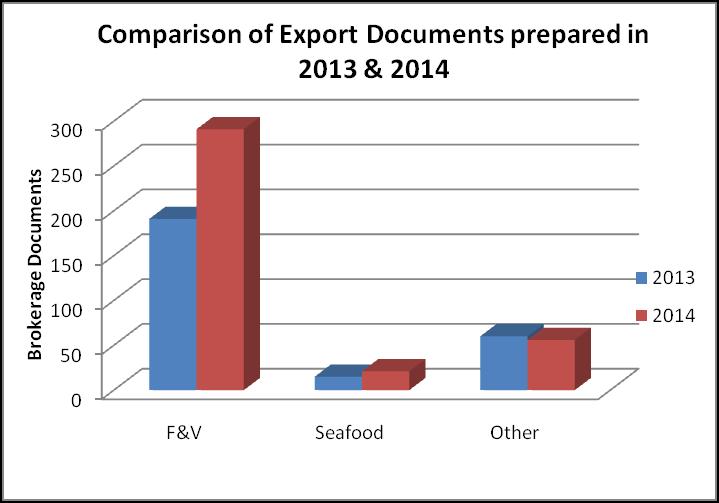
Figure 8: Comparison of Export Documents prepared in 2013 & 2014
Figure 9: Comparison of Export Documents Prepared and Extraregional Export
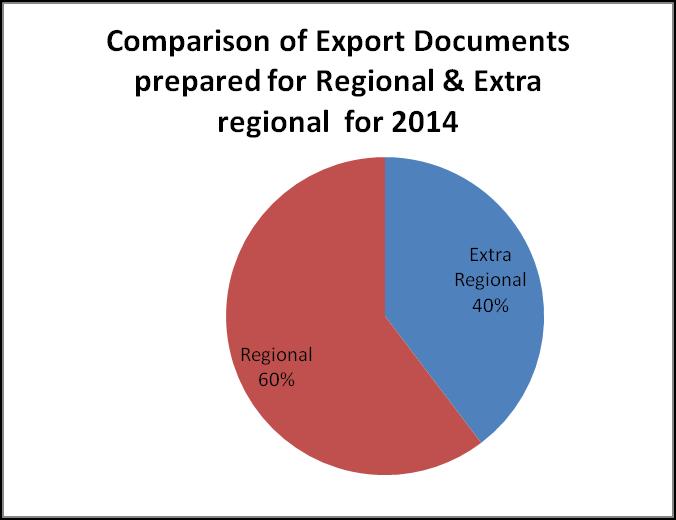
6. Market and Enterprise Information System
The website is the primary means of disseminating market information. This provides an electronic database with information for producers, buyers and other interested stakeholders. It provides vital information on production, marketing, price and much more.
In 2014, clients continued to use the Market and Enterprise Information System as a means of accessing information on the nontraditional crops sector. All services provided by GMC and more can be found there, for example, Brokerage, Market Analysis, Agri-
Figure 10: Screenshot of GMC Market and Enterprise Information System Business Development, Cold Storage Facility, Market Extension moreover, there are updates on daily prices etc. The website was updated regularly; the daily price data was updated every Monday, Wednesday and Friday.
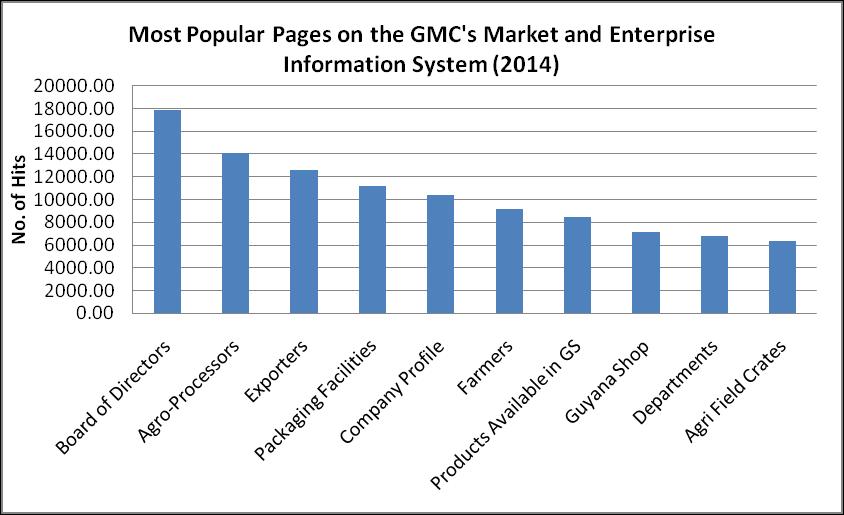
Figure 14 Figure 11: Most popular Pages on GMC’s Market and Enterprise Information System
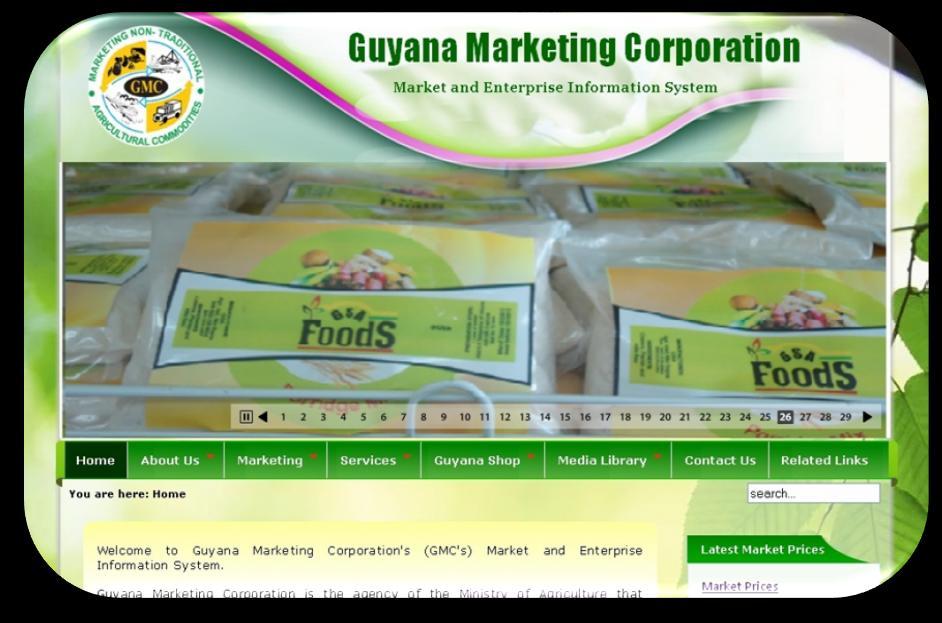
Figure 12: Most Popular Downloads
Online Clients were mostly interested in the Board of Directors, Packaging Facilities, AgroProcessors, Exporters and Company Profile (See Figure 11). Furthermore, the Agro-Processors‟ list, Crates Brochure, Exporters List were among the mostly downloaded
files (See Figure 12).
7. Other Activities
US Food & Drug Administration Registration

All persons desirous of exporting food products to the USA must complete a US Food & Drug Administration Registration. In 2014, GMC completed thirty-three (33) registrations for exporters.


